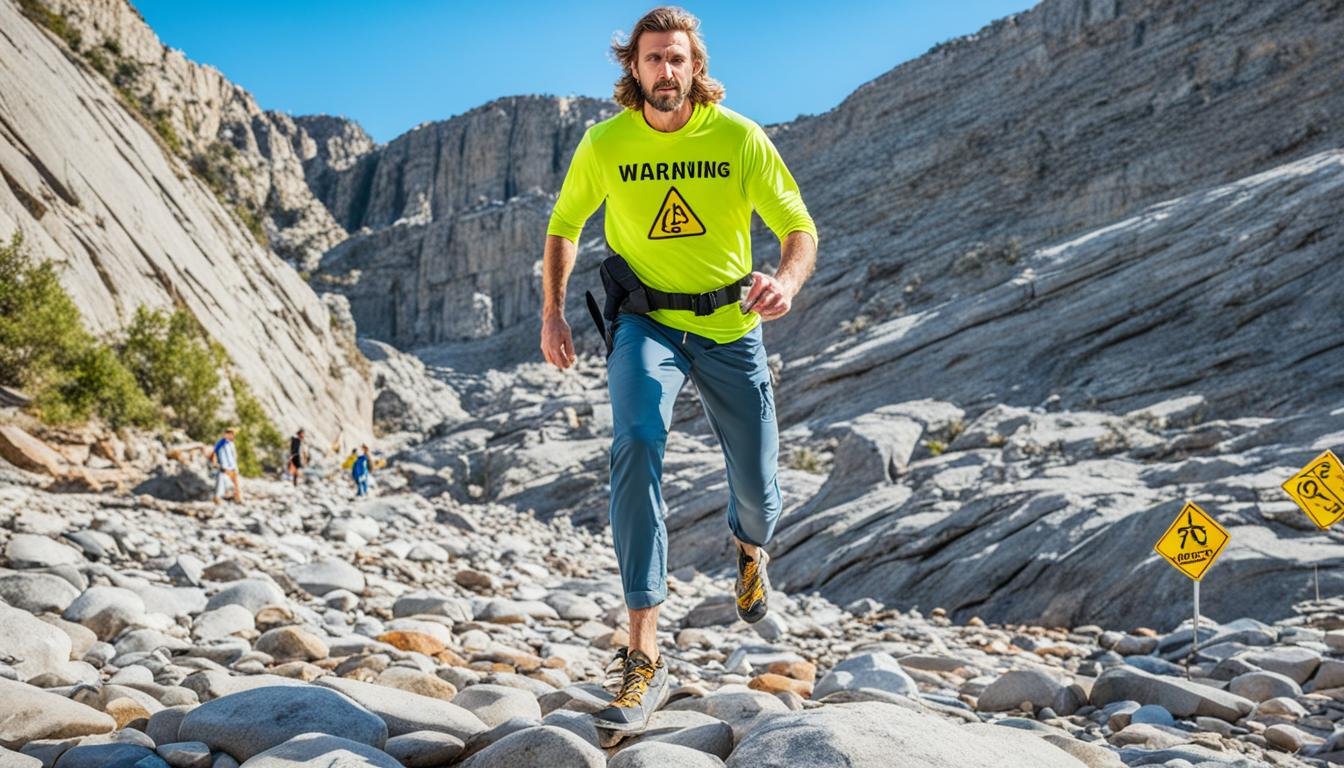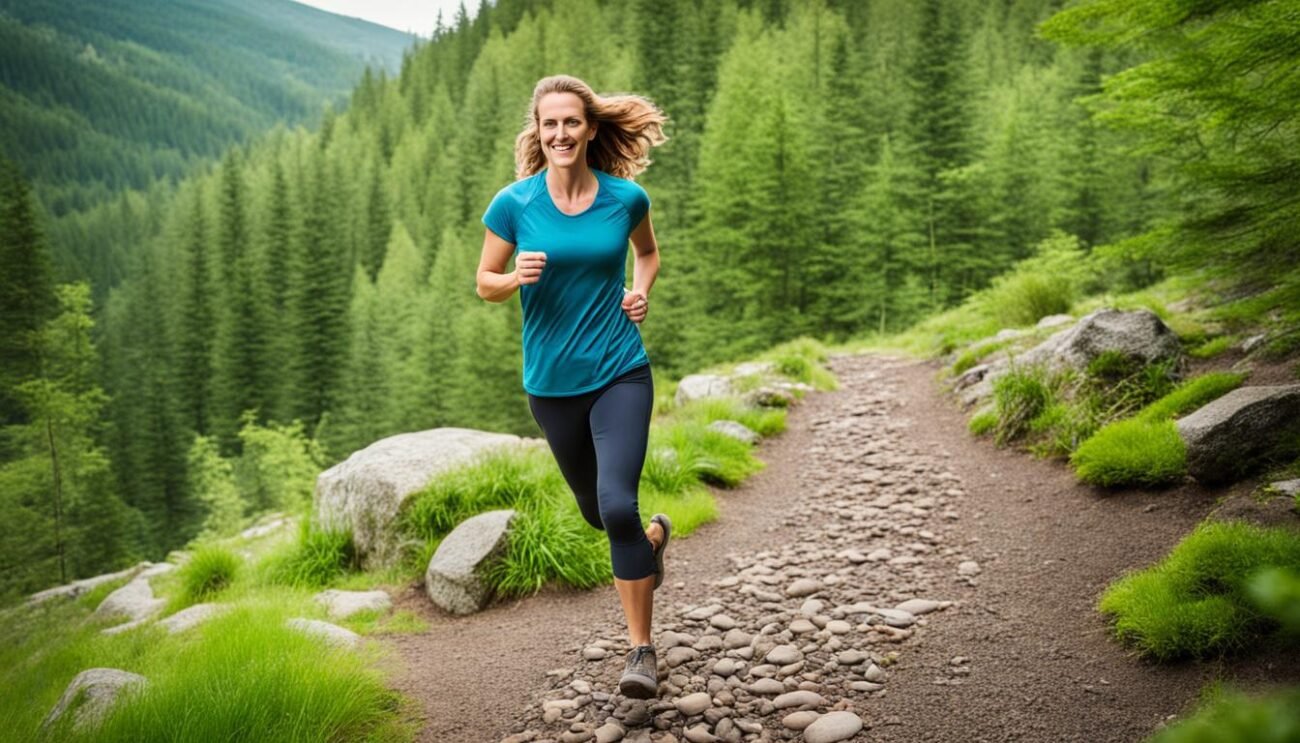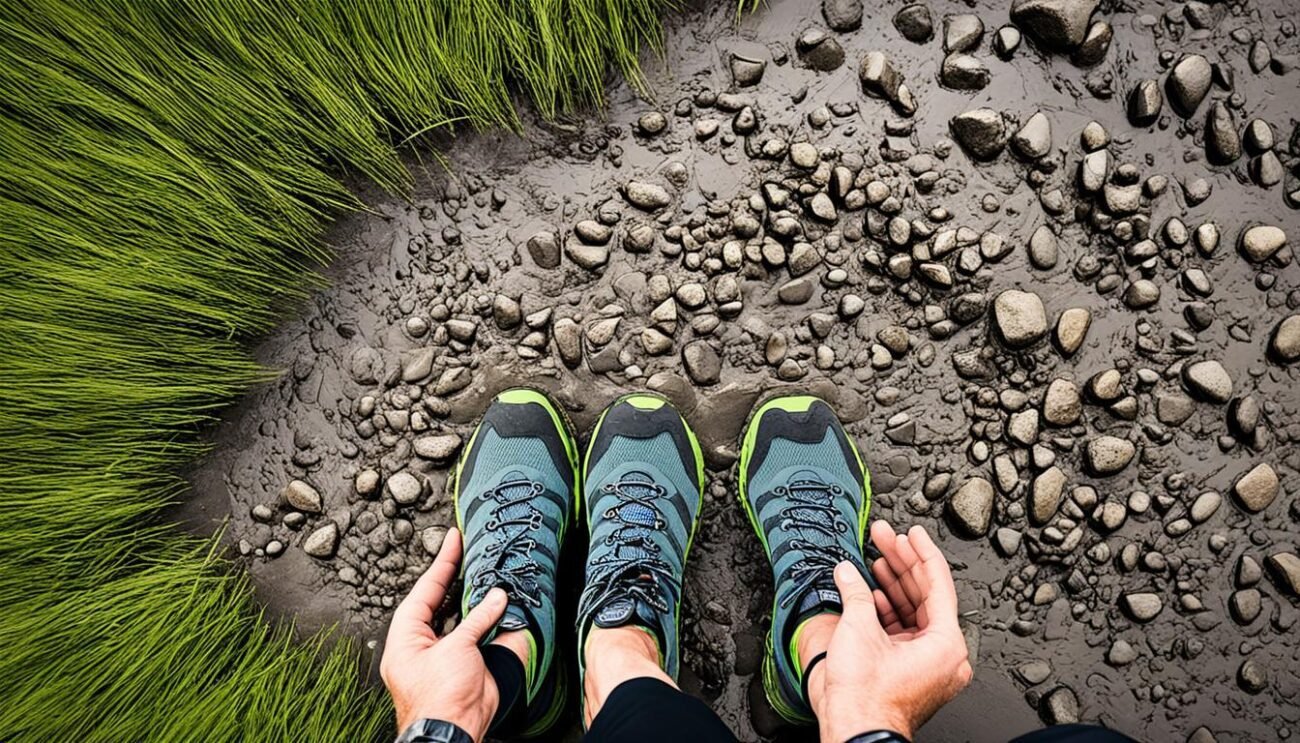Who Shouldn’t Wear Barefoot Shoes?

Thinking about barefoot or minimalist shoes? Wondering if they’re right for you? They bring many benefits to some. But, not everyone is a good fit. Who should steer clear of these shoes?
Changing to barefoot or minimalist shoes is a big shift. It’s wise to get professional or medical advice first. Most healthy folks can get used to them over time. But, some health conditions make these shoes a no-go. This includes Ehlers-Danlos syndrome and severe foot issues. The change might not be quick for everyone, so be ready to commit. For those with the mentioned conditions, slow and steady changes can boost foot health.
Key Takeaways
- Certain health conditions, such as Ehlers-Danlos syndrome, severe hypermobility, and peripheral neuropathy, may make the transition to barefoot shoes unsuitable or high-risk.
- Individuals with rigid musculoskeletal deformities or pre-existing chronic foot conditions should work closely with professionals before considering barefoot or minimalist footwear.
- The transition to barefoot shoes can be a long and involved process, requiring commitment and patience from the wearer.
- Gradual adaptations and professional guidance can help improve foot health, even for those with the identified contraindications.
- Exploring alternative options, such as shoes with wider toe boxes and appropriate support, may be a better choice for some individuals.
Understanding the Risks: Conditions that May Contraindicate Barefoot Shoes
The barefoot and minimalist shoe trend is on the rise, but they might not suit everyone. People with certain health issues, like Ehlers-Danlos syndrome or peripheral neuropathy, could face more problems with these shoes.
Ehlers-Danlos Syndrome and Severe Hypermobility
If you have Ehlers-Danlos syndrome or severe hypermobility, vibes of instability could affect you in barefoot shoes. This is because such individuals might find it hard to cope with the decrease in support and cushioning.
Rigid Musculoskeletal Deformities
Those with rigid musculoskeletal deformities can also have issues with barefoot shoes. The lack of support and cushioning in these shoes might make any foot or leg problems worse.
Pre-existing Chronic Foot Conditions
If you already have foot issues like plantar fasciitis or bunions, these shoes might not work. Transferring to barefoot or minimalist shoes can be pretty tough and could even aggravate your existing problems.
Peripheral Neuropathy
Peripheral neuropathy can make your feet numb or tingly, which is not ideal for these shoes. Without full sensory feedback and protection, there’s a bigger risk of getting hurt.
Experts stress to speak with healthcare pros, like podiatrists, before trying barefoot shoes, especially if you have these conditions. It’s important to slowly move into these shoes with professional help to keep safe.,
Who Shouldn’t Wear Barefoot Shoes?
Many people can benefit from barefoot and minimalist shoes. But, some folks might find them risky. This includes those with Ehlers-Danlos syndrome, severe hypermobility, and others with certain foot conditions.
If you fit into that group, talking to a doctor is important before trying these shoes. They suggest speaking with experts to get advice that fits your own needs and risks.
For these individuals, the advice is to look for shoes that meet your health needs. It could be shoes with more space for your toes, support for your arches, or extra cushioning. The aim is to balance strengthening your feet while still getting enough support, with your doctor’s help.
Transitioning to Barefoot Shoes: A Gradual Approach
If you’re thinking about getting barefoot shoes or minimalist footwear, slow and steady wins the race. It’s smart to ease into it. This way, you lower the risk of hurting yourself. The sources offer a bunch of steps to make the switch easy, even if you haven’t had issues before.
Choosing Shoes with Wider Toe Boxes
Picking shoes with wider toe boxes is key. It lets your feet move more naturally. This is super important for building foot muscles and keeping your whole foot in good shape. Shoes with tight toes can limit your foot’s movement. This might make problems like bunions worse, especially for women.
Incorporating Foot Exercises
Don’t forget to do some foot-strengthening exercises too. It’s all about making your feet stronger and more stable. This is critical when switching to barefoot or minimalist shoes. A study found that wearing orthotics made people’s foot muscles weaker over time by up to 17 percent.
Providing Safe Sensory Stimulation
Adding safe sensory stimulation for your feet is also a good idea. Try using products like Naboso or going barefoot inside. It can prepare your feet for the less cushioned world of barefoot or minimalist shoes.
Going step by step is the best way to move into barefoot shoes safely. These tips are your ticket to a smooth, problem-free change. Carefully following them boosts your shot at a great and lasting experience with barefoot shoes.

Professional Guidance for Barefoot Transitions
Thinking about moving to barefoot or minimalist shoes? It’s key to talk with professional guidance folks like podiatrists and gait specialists. They offer crucial advice and insights. This helps make the change safe and good for you, considering your unique foot health.
Consulting with Podiatrists and Gait Specialists
Podiatrists and gait specialists know a lot about feet and walking. They check how your feet work and if any issues might affect switching to barefoot shoes. They create plans just for you to change slowly, lowering injury risks. Talking to these experts will give you the confidence and help you need to choose wisely about your shoes.
Virtual Consultations for Personalized Advice
Tech makes it easy for you to get advice from virtual consultations with podiatrists and gait specialists. This means getting expert tips and suggestions without leaving home. Especially helpful for those far from healthcare pros.
Teamwork with professional podiatrists and gait specialists, in-person or virtually, ensures your switch to barefoot or minimalist shoes goes well. They work with you based on your foot health wants and goals.

Foot Health First: Considering Alternatives to Barefoot Shoes
Barefoot and minimalist shoes can help some people. But not everyone should wear them, especially those with certain health issues. It’s most important to keep your foot health in mind when choosing shoes. If barefoot shoes aren’t safe for you, look for shoes that are a good fit. Shoes with roomy toe boxes, some arch support, and cushioning might be better for you. These features can still offer some of the benefits of barefoot shoes. Making sure your feet are happy and healthy is key.
Finding the middle ground between stronger feet and support is the aim. It’s best to get advice from healthcare pros. Working with podiatrists or gait specialists, or even getting online advice is smart. They can help you make a smooth change in your footwear that works for you. This way, your shoes meet your feet’s special needs and goals.
Sometimes, alternatives are a great choice if traditional barefoot shoes don’t fit. They still put your foot health first. Knowing what’s right for you and seeking expert advice is crucial. With the right shoes, you can keep moving and living well.
FAQ
Who shouldn’t wear barefoot shoes?
According to the sources, some people should avoid barefoot or minimalist shoes. This group includes those with Ehlers-Danlos syndrome and severe hypermobility. Also, people with rigid musculoskeletal deformities and certain chronic foot conditions should be careful. Peripheral neuropathy is another key condition. If you have any of these, avoid barefoot shoes.
What conditions may contraindicate the use of barefoot shoes?
If you have Ehlers-Danlos syndrome, severe hypermobility, or other foot issues, barefoot shoes might not be right. These shoes lack support and cushioning, which can be tough for some. Always talk to a doctor before changing your footwear.
How can those with specific conditions transition to barefoot shoes safely?
To move safely to barefoot or minimalist shoes, the trick is to go slow. Start by picking shoes with wider toe boxes. Add foot exercises to strengthen and get your feet used to it. Sensory exercises also help. Keep in touch with your healthcare team as you make the switch.
What is the importance of seeking professional guidance when transitioning to barefoot shoes?
If you’re thinking about barefoot or minimalist shoes, talking to a professional is smart. This advice is important, especially if you already have foot troubles. Experts like podiatrists or gait specialists can give you careful guidance based on your personal needs.
What are the alternatives to barefoot shoes for those who cannot safely make the transition?
If barefoot shoes aren’t for you, don’t worry. There are still great options. Look for shoes with wider toe boxes that also have support and cushioning. These choices can fit your foot health needs better, while still offering some benefits of minimalist shoes.

